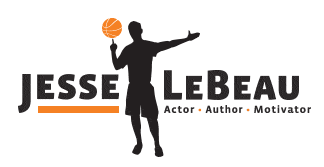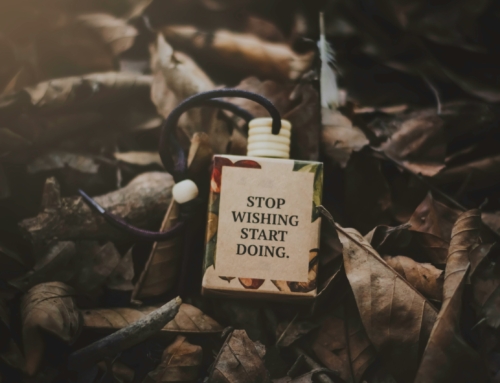The Game-Changing Power of Assertiveness for Teens
Introduction
Hey, it’s Jesse here, and I want to talk to you about something that really changed the game for me as a teenager, and I believe it can do the same for you: assertiveness. This isn’t just another skill you learn in school that you wonder if you’ll ever use in real life. Assertiveness is the real deal. It’s about speaking up, standing up, and showing up in a way that’s true to you. And let me tell you, it’s not always easy, but it’s definitely worth it.
The Journey from Shy Kid to Confident Speaker
I remember what it was like to be a teenager, feeling like I was on the outside looking in, wondering how others could speak their minds so freely. I wasn’t born with a microphone in my hand; I had to learn the hard way how to express myself. But here’s the thing: learning how to be assertive didn’t just help me find my voice; it helped me shape my future.
Assertiveness: More Than Just Talking Loud
Some people think being assertive means you have to be the loudest person in the room or always get your way. But it’s not about being loud or bossy; it’s about being clear, being heard, and respecting others enough to listen to them, too. It’s about knowing your worth, defending your boundaries, and still caring about the people around you.
This Guide: Your Personal Playbook
I’ve put together this guide because I want you to know that your voice matters. We’ll dive into what assertiveness really means, especially for us during those roller-coaster teen years. I’ll share stories from my own life, the challenges I faced, and the strategies I used to overcome them. By the end of this, I hope you’ll see assertiveness not just as a skill but as a way of life that opens doors, builds respect, and creates opportunities.
So, whether you’re feeling lost in the crowd, struggling to speak up in class, or just tired of feeling like you’re not being heard, this guide is for you. Together, we’re going to tackle some real stuff, and I’ll be with you every step of the way. Remember, being assertive isn’t about changing who you are; it’s about being the most authentic, powerful version of yourself. Ready to get started? Let’s dive in and discover how mastering assertiveness can truly change your game.
Understanding Assertiveness: The Balance Between Aggression and Passivity
Alright, let’s break this down. When I first started on my journey of self-expression, I had to learn the delicate dance between saying too much and not saying enough. You see, there’s a sweet spot right in the middle, and that’s where assertiveness lives. It’s like finding the perfect shot in basketball; it takes practice, precision, and the courage to take it.
The Balance Between Aggression and Passivity
Think of assertiveness as the middle ground in a game where aggression is charging forward without regard for others, and passivity is letting everyone else dictate your moves. Neither of these will help you win in the long run. Being assertive is about playing your game on your terms, with respect for the other players on the court.
Assertiveness as a Form of Self-Respect
For me, learning to be assertive was a game-changer because it was ultimately about self-respect. It was about acknowledging my value, not just on the court but in life. Assertiveness showed me that my opinions, needs, and boundaries mattered and that it was okay to voice them.
Key Components of Assertive Behavior
So, what does assertiveness actually look like? It’s about being direct and honest while still keeping it cool and respectful. It’s saying what you mean without being mean. It involves:
- Clear Communication: Just like in a game, you have to be clear about what you’re doing and why. No one’s a mind reader, after all.
- Respecting Boundaries: Yours and theirs. It’s about knowing where the line is and making sure everyone plays within it.
- Confidence: Believe in what you’re saying. If you don’t, why should anyone else?
Assertiveness isn’t something that happens overnight. It took me countless games, conversations, and even a few missed shots to really get it. But once you start practicing these components in your daily life, you’ll begin to notice a shift. Not just in how others see you, but in how you see yourself.
Remember, assertiveness isn’t about changing who you are. It’s about being the most genuine, powerful version of yourself, even when the game gets tough. Stick with me, and we’ll dive deeper into why this matters so much, especially for you as a teenager.
Why Assertiveness Matters for Teenagers: Navigating Social Dynamics with Confidence
You know, being a teenager today is like being in a never-ending basketball game, except the rules keep changing, and sometimes, it feels like everyone’s watching your every move. It’s during these years that being assertive can really make a difference. It’s not just about speaking up; it’s about finding your place in a world that seems to be shifting beneath your feet.
Navigating Social Dynamics with Confidence
Remember high school? For me, it was a mix of trying to fit in and trying to stand out—kind of like trying to nail the perfect layup under pressure. Being assertive in those social dynamics means more than just holding your ground; it’s about doing so with confidence. It’s about showing up as yourself, even when it’s tempting to blend into the background.
The Role of Assertiveness in Personal Growth
This journey of becoming more assertive, it’s a lot like growing your game. Every time you speak up, set a boundary, or stand up for what you believe in, you’re not just making a statement to the world; you’re also telling yourself that you matter. This is where real growth happens—not just as a player on the court but as a person off it.
Protecting Your Boundaries and Respecting Others
One of the coolest things about becoming more assertive? Learning the power of “no.” But it’s not just about saying no; it’s about understanding that you have the right to protect your space, your time, and your energy. And here’s the kicker: when you respect your own boundaries, you start respecting others’ too. It’s like a mutual respect thing that makes every interaction more genuine.
I get it. It’s not easy to navigate all this, especially with the pressure of exams, relationships, and all the noise from social media. But here’s where I want you to lean in: assertiveness is your secret weapon. It’s what helps you navigate these dynamics with your head held high and your feet firmly on the ground.
As we keep moving through this guide, remember that every step towards being more assertive is a step towards becoming the person you’re meant to be. Up next, we’ll talk about some practical ways to develop your assertiveness skills, so stay tuned. It’s about to get real, and I promise, you’ve got this.
Developing Your Assertiveness Skills: Effective Communication Techniques
Alright, now we’re getting to the good part – how to actually develop these assertiveness skills. Think of it like working on your dribbling or your free throws; it’s going to take some practice, but man, is it worth it. Here are some strategies that helped me, and I’m pretty sure they’ll help you too.
Effective Communication Techniques
First up, communication – it’s key. But not just any communication. We’re talking clear, concise, and straight to the point. It’s like making a no-look pass; you need to know exactly where you’re aiming. Start practicing by expressing your thoughts and needs openly and honestly, without beating around the bush. Remember, it’s not about being aggressive; it’s about being assertive. There’s a big difference.
The Power of “I” Statements in Expressing Yourself
One game-changer for me was learning to use “I” statements. Instead of saying, “You never listen to me,” try, “I feel unheard when my opinions aren’t considered.” See the difference? It shifts the focus from blaming to expressing how you feel, which is way less likely to put someone on the defensive.
Learning to Say No Respectfully
And then there’s saying no. This one can be tough, especially when you want to fit in or when it’s someone you care about asking for a favor. But stretching yourself too thin won’t help anyone, least of all you. Practice saying no in a way that’s respectful but firm. You can always offer an alternative if it feels right. The point is, you have a choice, and it’s okay to use it.
Developing your assertiveness skills is like building muscle; the more you use them, the stronger they get. Start with these techniques and use them in your daily interactions, whether it’s with your friends, family, or teachers. It might feel awkward at first, but keep at it. Just like in basketball, practice makes perfect.
Next, we’ll look at some practical tips for bringing assertiveness into your everyday life. Because knowing the plays is one thing, but being able to execute them when it counts? That’s where the real growth happens. Stay tuned, and remember, this is your journey. Own it.
Practical Tips for Everyday Assertiveness: Handling Peer Pressure with Grace
Navigating the high school halls, figuring out where you stand with your friends, or even just speaking up in class can feel like you’re constantly playing defense. But what if I told you that mastering everyday assertiveness can turn those moments into opportunities? Let’s dive into some real-life plays that can help you handle peer pressure and more with the grace of a pro.
Handling Peer Pressure with Grace
Peer pressure—it’s like facing a full-court press. Everyone seems to be moving in one direction, and the expectation is for you to follow suit. But here’s where your assertiveness skills come into play. When faced with a decision that doesn’t sit right with you, take a moment, and remember your values. It’s okay to go against the grain. Respond with confidence and keep your response simple and straightforward. You might say, “I get why you guys want to do that, but it’s not for me.”
Asserting Yourself in Family Dynamics
Family—it’s like your home team, and sometimes, even they can push you into corners you’re not comfortable with. Maybe it’s pressure about grades, questions about your friends, or discussions about your future. Use those “I” statements we talked about, like, “I understand you want what’s best for me, but I need to find my own way in this.” Remember, assertiveness is about expressing your needs and boundaries respectfully.
Building Assertiveness in Academic and Extracurricular Activities
Whether it’s asking for help on a project, contributing your ideas in a group setting, or taking on a leadership role in a club, these are all prime opportunities to practice being assertive. Speak up about your thoughts and what you believe you can contribute. For instance, “I have an idea that might work well for our project,” opens up a dialogue and asserts your willingness to engage.
Practical assertiveness isn’t about winning every exchange; it’s about knowing you’ve stayed true to yourself, regardless of the outcome. Every conversation, every challenge, is a chance to practice and refine your assertiveness skills. It’s about making those small, daily choices that reflect who you are and who you aspire to be.
As we wrap up this guide, remember that assertiveness is a journey. There will be missteps and victories, but each is a learning moment propelling you forward. Keep your head up, your communication clear, and your intentions pure. You’ve got this, and I’m cheering for you every step of the way. Let’s keep the conversation going. What’s one area of your life where you want to be more assertive? Drop a comment, send a message – let’s tackle this together.
Overcoming Challenges to Being Assertive: Dealing with Fear of Rejection or Conflict
So, we’ve talked about what assertiveness looks like and how to start weaving it into the fabric of your everyday life. But let’s be real for a second—sometimes, the biggest thing holding us back is fear. Fear of how people will react, fear of stirring the pot, fear that standing up for ourselves might lead to rejection or conflict. Believe me, I’ve been there. And here’s what I’ve learned: facing that fear is where your true growth happens.
Dealing with Fear of Rejection or Conflict
Remember, every great play in a game comes with its share of risks. The fear of rejection or conflict is like that defender trying to block your shot. You might not always make it past them, but that doesn’t mean you stop shooting. It’s about understanding that rejection and conflict are part of life, and they don’t define your worth. The real win is in standing up for yourself, regardless of the outcome.
Recognizing and Overcoming Internal Barriers
A lot of the time, the barriers to assertiveness are in our own heads. It’s the voice telling us we’re not worth the trouble, or that we’re being too difficult. I’m here to tell you that voice is wrong. You are worth it. Overcoming those internal barriers starts with changing the narrative. Affirmations can be a powerful tool here. Try starting your day by reminding yourself, “My voice matters. My needs are important.”
Seeking Support: When and How to Ask for Help
Even the greatest athletes have coaches, teammates, and mentors supporting them. The same goes for becoming more assertive. If you’re struggling, reach out to someone you trust. It could be a friend, a family member, or even a counselor. There’s strength in seeking support, not weakness. It’s about building a team around you that lifts you up and pushes you to be your best self.
it’s about moving forward despite those feelings. It’s about making the decision that your voice is worth hearing, even when it shakes. So, take a deep breath, square your shoulders, and face those fears head-on. Every step you take is a step towards the confident, assertive person you’re meant to be.
We’ve covered a lot of ground together, and I hope you’re walking away with some valuable tools in your toolkit. Assertiveness is a journey, with ups and downs, successes and learning moments. Keep practicing, keep pushing, and keep believing in yourself. Because you, my friend, have got what it takes. Let’s keep the conversation going. What’s one fear you’re ready to face on your journey to becoming more assertive? Share it, own it, and let’s conquer it together.
As we close this chapter on developing assertiveness skills for teenagers, I want to leave you with some final thoughts and a call to action. This journey you’re embarking on—towards becoming more assertive—isn’t just about improving your communication or learning to stand up for yourself. It’s about unlocking your true potential and stepping into the person you’re destined to become. It’s about not just playing the game but changing it, for yourself and for those around you.
The Ongoing Journey of Assertiveness
Remember, becoming more assertive is a continuous journey, not a destination. Like any skill, it gets better the more you practice. There will be days when you feel like you’ve got this, and others when it feels like you’re starting from square one. That’s all part of the process. The key is to keep moving forward, keep learning from each experience, and never lose sight of your worth and your voice.
A Call to Action: Start Small, Think Big
I want to challenge you to take a small step towards being more assertive today. It doesn’t have to be anything monumental. Maybe it’s expressing an opinion in a conversation, setting a boundary with a friend, or volunteering for something you’ve been hesitant to try. Whatever it is, make it something that pushes you just a little out of your comfort zone. Because that’s where growth happens.
Embracing Your Assertive Self with Confidence
Finally, embrace the journey with confidence. Believe in your ability to grow, to change, and to make a difference in your world. Your assertive self is your true self—bold, brave, and unapologetic. And remember, I’m right here cheering you on, every step of the way.
This guide is just the beginning. Your journey of assertiveness is uniquely yours, filled with its own challenges and triumphs. Keep building on what you’ve learned, keep pushing yourself, and always, always keep your head up. You have a voice that deserves to be heard, opinions that matter, and a place in this world that’s uniquely yours to fill.
Thank you for walking this path with me. Here’s to your success, your growth, and your assertive journey ahead. Let’s make it count. And hey, don’t be a stranger—drop me a line anytime about your progress, your setbacks, or just to say hi. You’re part of the team now, and together, we’re unstoppable.








